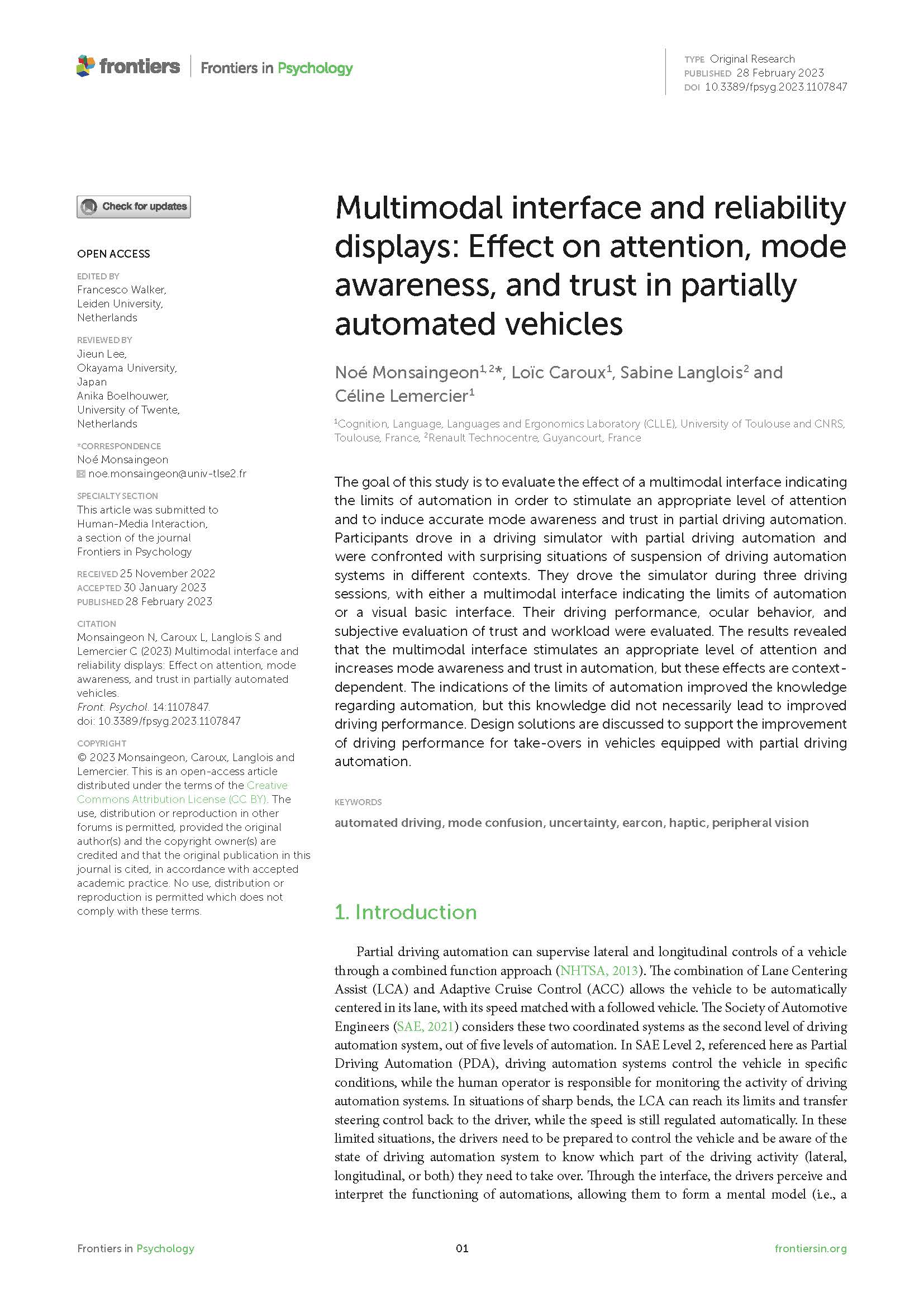The goal of this study is to evaluate the effect of a multimodal interface indicating the limits of automation in order to stimulate an appropriate level of attention and to induce accurate mode awareness and trust in partial driving automation. Participants drove in a driving simulator with partial driving automation and were confronted with surprising situations of suspension of driving automation systems in different contexts. They drove the simulator during three driving sessions, with either a multimodal interface indicating the limits of automation or a visual basic interface. Their driving performance, ocular behavior, and subjective evaluation of trust and workload were evaluated. The results revealed that the multimodal interface stimulates an appropriate level of attention and increases mode awareness and trust in automation, but these effects are contextdependent. The indications of the limits of automation improved the knowledge regarding automation, but this knowledge did not necessarily lead to improved driving performance. Design solutions are discussed to support the improvement of driving performance for take-overs in vehicles equipped with partial driving automation.
Multimodal interface and reliability displays: Effect on attention, mode awareness, and trust in partially automated
